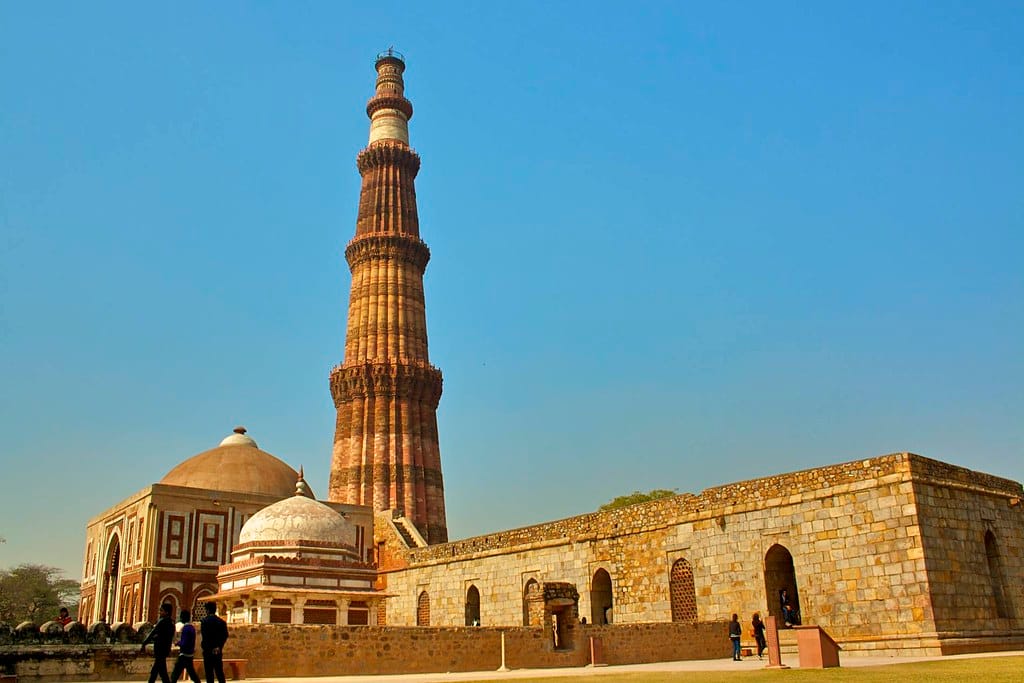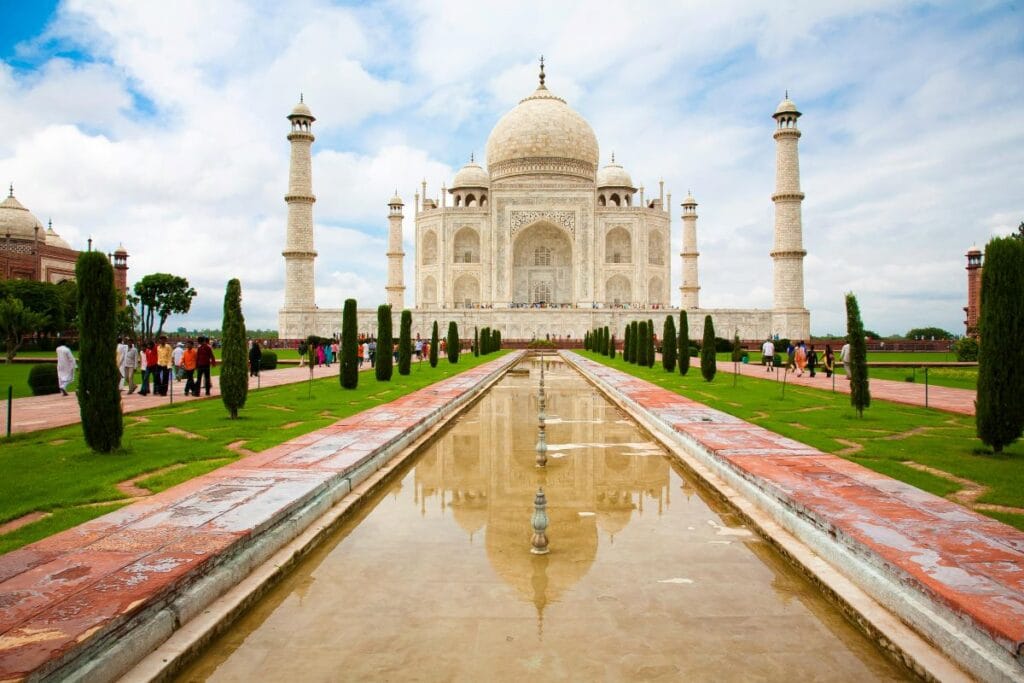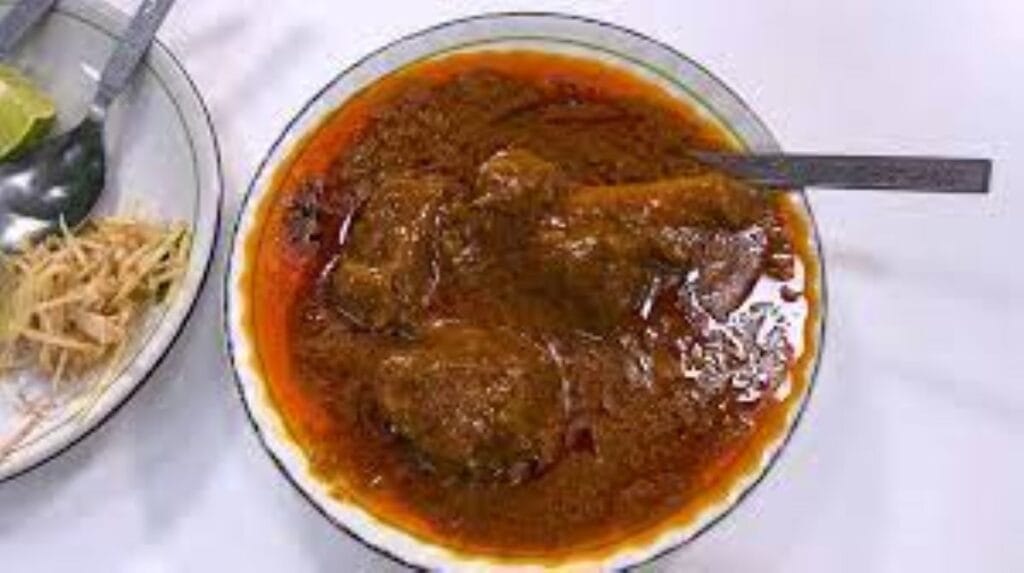Delhi, the capital of India, is not just a city; it’s a living museum of the country’s rich history and cultural legacy. Known for its seamless blend of ancient monuments and modern marvels, Delhi serves as the perfect base for tourists looking to explore India’s UNESCO World Heritage Sites and globally iconic landmarks, including some from the Seven Wonders of the World. Whether it’s the allure of Mughal architecture, bustling markets, or the tantalizing aroma of Indian cuisine, Delhi offers a multi-faceted experience for every traveler.

A Walk Through Delhi’s Glorious History
The history of Delhi is a tapestry woven with the influence of several empires and dynasties. Dating back to the era of the Mahabharata, where it was known as Indraprastha, Delhi has been the capital of the Delhi Sultanate, the Mughals, and modern India. This enduring legacy is etched in its architecture, cultural practices, and monuments that continue to captivate visitors from across the globe.
From the majestic Red Fort to the towering Qutub Minar, Delhi narrates the story of a city that has risen and thrived through the sands of time, making it a must-visit destination for history enthusiasts.
Top UNESCO World Heritage Sites in Delhi
1. Red Fort (Lal Qila)
- Historical Significance: Built by Emperor Shah Jahan in 1639, the Red Fort served as the residence of Mughal emperors for over 200 years. A UNESCO World Heritage Site, it symbolizes India’s struggle for independence and its rich cultural heritage.
- What to See: Highlights include the Diwan-i-Am, Diwan-i-Khas, and the charming Rang Mahal.
- Accessibility: Located in Old Delhi, the fort is easily accessible via the Chandni Chowk Metro Station (Yellow Line).
- Nearby Attractions: Don’t miss Chandni Chowk, a bustling market for spices, fabrics, and street food.

2. Qutub Minar
- Historical Significance: A 73-meter-high marvel of Indo-Islamic architecture, the Qutub Minar was built by Qutb-ud-din Aibak in the 12th century. It stands as the tallest brick minaret in the world and is surrounded by other historical structures like the Alai Darwaza and the Iron Pillar.
- What to See: The intricately carved tower and the ancient inscriptions.
- Accessibility: Situated in Mehrauli, reachable via the Qutub Minar Metro Station (Yellow Line).

3. Humayun’s Tomb
- Historical Significance: A precursor to the Taj Mahal, this tomb was built in 1570 for Emperor Humayun. Its Persian-style gardens and domed structure are awe-inspiring examples of Mughal architecture.
- What to See: The Charbagh-style gardens, Nila Gumbad, and Isa Khan’s Tomb within the complex.
- Accessibility: Located near Nizamuddin, accessible by cab or metro (JLN Stadium Metro Station).

Beyond Delhi: Iconic World Wonders and Nearby UNESCO Sites
4. Taj Mahal (Agra)
- Historical Significance: One of the Seven Wonders of the World, the Taj Mahal was commissioned by Shah Jahan in memory of his beloved wife, Mumtaz Mahal. Its white marble, inlaid with precious stones, represents eternal love.
- What to See: Admire the Taj Mahal at sunrise, explore its intricate carvings, and visit nearby Agra Fort.
- Accessibility: A 3-hour drive from Delhi via the Yamuna Expressway. Trains like the Gatimaan Express provide an alternate travel option.
- Nearby Attractions: Fatehpur Sikri and Akbar’s Tomb.

5. Jaipur: The Pink City
- Jantar Mantar: A UNESCO-listed astronomical observatory showcasing India’s scientific brilliance.
- Amer Fort: An exquisite blend of Hindu and Mughal architecture.
- Accessibility: Jaipur is 5 hours by road or 4 hours by train from Delhi, making it a vital part of the Golden Triangle circuit.

Delhi’s Vibrant Markets and Culinary Scene
No visit to Delhi is complete without exploring its lively markets and sampling its diverse culinary offerings.
Top Markets
- Chandni Chowk: Famous for traditional jewelry, fabrics, and street food. Paranthe Wali Gali is a must-visit for stuffed Indian flatbreads.
- Sarojini Nagar: A haven for budget-friendly fashion and accessories.
- Dilli Haat: A cultural hub featuring handicrafts and cuisines from all over India.
Must-Try Eateries
- Karim’s (Old Delhi): Renowned for its Mughlai dishes like kebabs and biryani.
- Indian Accent (Lodhi Road): A fine dining restaurant offering modern twists on traditional Indian dishes.
- SodaBottleOpenerWala (Khan Market): Serving authentic Parsi and Bombay street food.


Tips for Overseas Tourists Visiting Delhi and Beyond
- Visa Requirements: Most tourists need an Indian visa; opt for an e-Visa for a hassle-free process.
- Best Time to Visit: October to March, when the weather is cooler and ideal for sightseeing.
- Local Transport: Use the Delhi Metro for affordable travel. Apps like Uber and Ola are reliable for cabs.
- Currency: The Indian Rupee (₹) is widely accepted. Currency exchange facilities are available at airports and city centers.
- Cultural Etiquette: Dress modestly, especially when visiting religious sites. Remove shoes before entering temples or mosques.
Why Delhi is the Perfect Starting Point
Delhi’s central location and connectivity make it an ideal gateway to explore India’s wonders. Whether you’re soaking in the historical grandeur of the Red Fort, marveling at the Taj Mahal, or shopping in bustling markets, Delhi sets the tone for an unforgettable journey through India.
Conclusion
Delhi is more than just a destination—it’s an experience. With its historical landmarks, vibrant markets, and world-class eateries, Delhi promises to leave you with memories that will last a lifetime. So, pack your bags, prepare for a cultural immersion, and let Delhi introduce you to the heart of India.
Love Exploring? Don’t Miss Our Trending Travel Blogs: Seven Wonders of the World, Top 5, Must-Visit Attractions of Canada?, Bali Travel Guide, Andaman and Nicobar Islands


Leave a Reply